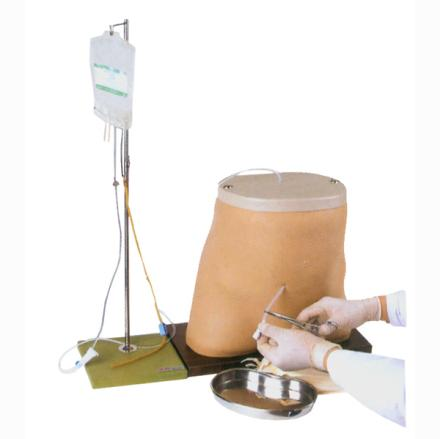

Article tag: Membrane dialysis model| medical clinical model|
First, the core of the membrane dialysis model is to simulate the function of human peritoneum. The peritoneum acts as a semi-permeable membrane during dialysis, allowing certain substances to pass through while blocking others.
...First, the core of the membrane dialysis model is to simulate the function of human peritoneum. The peritoneum acts as a semi-permeable membrane during dialysis, allowing certain substances to pass through while blocking others. Special materials are used in the peritoneal part of the model to simulate the semi-permeability of the real peritoneum, ensuring that the exchange of substances during dialysis can be accurately simulated.

Secondly, the model is designed with a simulated abdominal cavity space for storing dialysate. Dialysate is a key element in peritoneal dialysis process. It exchanges substances with blood through the peritoneum. The composition and concentration of dialysate used in the model are carefully calibrated to be as close as possible to the real situation. During simulated dialysis, dialysate is injected into the simulated abdominal cavity and exchanged with the simulated blood through the peritoneum.
In addition, the membrane dialysis model also takes into account the dynamics of the dialysis process. In the real process of dialysis, the flow and substance exchange of dialysate are dynamic. The model simulates the flow and distribution of dialysate in the abdominal cavity by designing a reasonable fluid dynamic system. This helps to more realistically simulate the efficiency and effect of substance exchange during dialysis.
In addition to the above core simulation elements, the membrane dialysis model also focuses on the details of the dialysis process. For example, the model takes into account possible complications in peritoneal dialysis, such as infection, peritonitis, etc., and simulates them by corresponding design. This helps health care workers learn and manage these complications in a simulated environment, improving their ability to cope.
Finally, the laminating dialysis model incorporates an advanced monitoring and recording system. In the process of dialysis, the model can monitor and record key parameters in real time, such as the temperature of dialysate, the change of composition, and the efficiency of material exchange. These data not only help to evaluate the effect of dialysis, but also provide valuable feedback information for medical staff to better understand and master the principle and operation skills of peritoneal dialysis.
In summary, the membrane dialysis model comprehensively and accurately simulates the real dialysis process by simulating the semi-permeability of the peritoneum, designing a reasonable peritoneal space and fluid dynamics system, considering complications and integrating advanced monitoring and recording systems. This provides a valuable practice and learning platform for healthcare professionals, helping to improve their professional skills and coping capacity.